
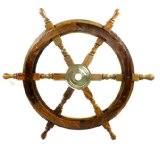
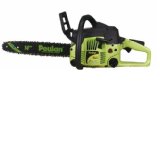
Search This Site
Search With Google
Plaster Mixer
Moisture or damp problems in your home may have caused some damage which needs repairing. Once moisture or damp has been detected by your moisture meter, you will have to take actions to prevent the problems arising again. Once these preventative actions have been completed you may find yourself in a situation where some new decorating has to take place.
If you have decided to redecorate a room or part of your home, you will use your wallpaper stripper to remove any old existing wallpaper. By doing this you will give yourself a clean canvas to work from. However, wallpaper does tend to hide things and once you have removed all your old wallpaper with the wallpaper stripper, you may discover the wall plaster behind it needs touching up, or at worst, redoing. Plastering a wall can be a tough job, but the job is made a lot easier if you have a plaster mixer.
Before embarking upon plastering a wall a room you need to make sure you have all the correct equipment and materials. One such tool that you will definitely require is the plaster mixer. You can use just a plain wooden stick to mix the plaster which is fine if you are only needing small amounts of plaster. However if you plastering a large wall or a whole room then you will need large amounts of fresh plaster and to mix all that you need you will definitely need a powered plaster mixer. The mixing of the plaster is a very important phase of any plastering task.
With a plaster mixer you can attach a paddle which will make the task so much easier and less time consuming for you. Plaster has a relatively short working life span, so when you mix plaster you will do it in small quantities but many times. So with an electric plaster mixer the task is all that much more easier. All you need do is add water to the plaster and use your plaster mixer until you have plaster of the right consistency to work with.
If you are looking to buy a plaster mixer the place to go is to your local DIY store where you will be able to look at examples in real life and see which one is the right one for you. Other alternative buying options of a plaster mixer include searching the internet or looking in your local newspapers to see if anyone is selling a second hand one that they have no more use for. If buying a plaster mixer is not really an option for you as you will only be using it once, then the perfect solution is to hire one by the day from a tool hire shop.
Mixing Plaster
As long as you have a bucket or suitable container of some sort and a piece of wood anyone can mix plaster. However it is much better and easier for you if you have a suitably large bucket or plaster bath and a plaster mixer. There are plaster mixer drills out there in the market today, however this kind of work can be tough on drills and can easily burn out the motor on a small power drill. So it is recommended that you use a properly designed plaster mixer that has been manufactured with the plaster mixer task in mind.
When you mix plaster or other similar substances you should always put the water in the bucket first before adding the plaster mix.The reason for this is if you put the plaster mix in the bucket first and then add the water you will find that the mix will be lumpy and no use to you and you will have to throw it away. Before adding the water always ensure that you are beginning with a clean bucket. When you have sufficient water in the bucket you can begin to add the plaster mix. At first you can add large amounts but when it comes to adding more plaster later it is better to use a gauging trowel rather than guesswork. Be careful when adding the plaster to the water not to create too much dust as this could irritate you. Once you have added the approximate correct amount of mix to the water in the bucket you take your plaster mixer and insert it in the mix. Turn on and allow it to mix the mixture to the correct consistency you require. The end result if done correctly will be a very smooth and lump free plaster that is ready to plaster any wall with.
Plastering
Plastering is an important part of any building or construction work. It is the cove ringing of any rough or new built surface with plaster to give a nice smooth and neat finish. As well as making a surface look nice and pleasing to the eye, plastering also gives a protective coating to a surface in the form of protecting from dampness, sunlight and any variation in temperature change. Plastering will also protect a surface from any chemical attack from such as chlorides and sulphates.
There are 2 kinds of plaster that are generally used and both can be mixed up using a plaster mixer and bucket or turbo tub. These being gypsum based and cement based. For exterior plastering a cement based plaster is used. Exterior walls are exposed to more weather conditions and hence require a stronger and tougher plaster. Cement plaster is more resistant to dampness and wet conditions. For interior plastering gypsum plaster is used on such rooms as bedrooms and living rooms. But with bathrooms and kitchens where there is a threat of dampness then again cement based plaster is used. Gypsum based plaster will crumble down and crack if subjected to dampness.
To complete the perfect plastering job you will require all the necessary tools. These include the hawk, plastering trowels, buckets, plumb level, straight edge, steel float, trimming knife and a plaster mixer. As well as having all the necessary tools a perfect plaster mix has to be made for the perfect job. This perfect plaster mix is made using a plaster mixer and the correct ratios of water to the raw plaster.
Plaster is usually applied in 2 coats with a backing coat and then the finishing coat. The backing coat is bonding or browning plaster. An alternative to this is to use plaster board which is very easy to do that even a complete novice can successfully do it. The finishing coat is where the skill comes in to give a smooth and perfect finish.
When mixing plaster with your plaster mixer always use cold water and never add the water to plaster. Always add the plaster to the water to prevent it from becoming lumpy. Remember that plaster does set very quickly so only mix small quantities at a time. You should only apply plaster to the wall when it is still creamy and soft. For the base coat you can apply 2 coats if you so wish to get the ideal thickness that you require. Skimming is the term used for the application of the final coat and this is a skilful job to get the finesse and smoothness you need. Skimming should be done when the base coat is set but still damp.
Plaster Mixer Safety
If the type of plaster mixer you choose to buy is an electrical one you must always remember that it is a power tool and safety measures should always be adhered to. On buying the plaster mixer you should always familiarise yourself with the machine by reading and understanding any manual that it is supplied with. Once read, keep the instruction manual in a safe place for future reference. Remember that despite reading the manual and following all safety issues there can still be a risk of an accident so always use the plaster mixer with caution and make sure that anyone else who uses it are familiar with the safety issues.
Much safety with the use of power tools such as the plaster mixer is just down to common sense but there are certain issues and procedures you need to follow. With the plaster mixer make sure that all the guards are in the correct position and in tip top working order. You should never use a tool if the guards that are supplied with it are missing or faulty. If the guards are faulty then you must replace them.
Power tools need to be set up and adjusted before use and the plaster mixer is no exception. To make these adjustments and complete the set up of the machine you will be supplied with adjusting keys and other adjusting devices. Before using the tool always check the machine to make sure that these keys or devices have been removed.
One of the top causes of accidents when using a power tool is mess and unclean working environments. So when mixing plaster with your plaster mixer always clear away any clutter to give
Moisture Meter Guide 2010 Contact details:garnett65@hotmail.com
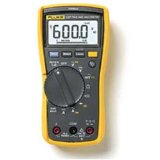

The complete moisture meter website
Moisture Meter Guide
Wagner Moisture Meters
General Tools MMD5NP Pinless LCD
General Tools MMD7003 Precision
General Tools MMD8P Multi Species
General Tools MM700D Precision
Boat Moisture Meter
A moisture meter proves itself to be a useful tool when testing the moisture content levels of boat materials. When assessing a boat, care, judgement and experience should all be employed and then the moisture meter used as the last tool to give the final assessment. Testing fibreglass boats
Need A Chainsaw For Firewood?
The petrol chainsaw is used to fell trees, as well as for pruning and cutting overgrowth. Tree surgeons favour the petrol chainsaw and use it for cutting away branches and foliage. Best chainsaws
Orchid Moisture Meter
The orchid belongs to a widespread and very diverse family of flowering plants which have fragrant and colourful blooms. Orchids can be found in pretty much every habitat.How much water do orchids require?
Caravan Moisture Meter
Any caravan that is kept open to the elements all year round can become very susceptible to damp and damp related problems if proper precautions are not taken to prevent this. Moisture levels inside caravans
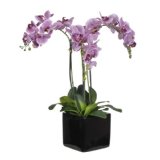
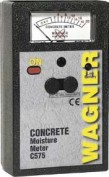
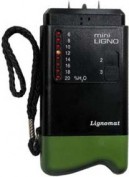
Garden Moisture Meter
The garden moisture meter helps any avid gardener to measure and monitor many different conditions to ensure that they can maintain healthy growing conditions for both indoor as well as outdoor plants. In order to have healthy thriving plants Soil moisture probe

yourself ample working space and room. Particularly check the floor. You want a clear floor and a floor that is not slippery.
Children and pets are naturally inquisitive so they must be kept at a safe distance from any area that you are working in. The plaster mixer should be locked away when not in use and in a place where children can not get access to. And never let children or untrained people use the tool.
When using the plaster mixer yourself always dress correctly. You don’t want to be wearing loose clothing, jewelry or neckties that can get caught up in the machine. Footwear is of paramount importance and working boots should be worn. Boots with non slip soles are perfect and to protect your toes you should really also have boots with protective toe caps in them. If you have long hair always remember to wear a cap or tie the hair back. Another issue when using a power tool such as the plaster mixer is that of vibration. Vibration can actually cause disease so always wear gloves. A decent pair of work gloves will protect a users hands as well as keeping the hands warm. Warm hands help to maintain a good blood circulation in the fingers. Take a break is an important thing to do as well. It is not advisable to use hand held tools for elongated periods of time without taking a break
When using the plaster mixer it is very important to always keep your balance. To ensure that you are always balanced never over reach when using the tool. Always keep proper footing at all times and never use the tool when you are standing on an unstable surface.
Most power tools come with attachments. These attachments are made for particular machines and have the correct fittings etc. With the plaster mixer for example, only use accessories and attachments that are mentioned in the manual and made for the particular tool. Using attachments that are not meant for the machine can lead to damage of the tool or injury to the user. Consider the warranty of your tool as well. Using attachments not designed for your tool could invalidate your warranty.
Finally before you even begin to use your plaster mixer always thoroughly check the tool. You will be looking for any parts that are missing or damaged. If you find parts are missing or damaged, then replace them immediately.
Follow these safety precautions and your use of the plaster mixer should be a fruitful and safe one.
Plaster Mixer Maintenance
Keeping your plaster mixer in tip top working condition is not a difficult task and can be done yourself. Keeping the machine clean and well maintained will ensure that you have many years of high quality and efficient use from your power tool.
Before cleaning or maintaining your plaster mixer always ensure that it is unplugged from the mains. Because of the nature of work you will be using your mixer for, it will inevitably get dirty very quickly. Dirt and dust will affect the workings of your machine and cause any internal parts to wear quickly and hence shorten the working life of the tool. So after every use give the plaster mixer a thorough cleaning. To clean the body you can use a soft brush or even a dry cloth. When it comes to the ventilation holes though, the perfect cleaning tool is compressed air. If this is available to you then blow compressed air through the ventilation holes after every usage.
Over a period of time it is inevitable that the carbon brushes inside the motor will become worn. The result of this wearing is a loss of power, visible sparking and intermittent failure. So these carbon brushes need replacing and it is advisable to have this done at an authorized service centre.
| Tramex Moisture Encounter Plus |
| Tramex Compact Wood Moisture Meter |
| Tramex Concrete Encounter Moisture Meter |
| Tramex Skipper Plus Moisture Meter |
| Tramex Roof And Wall Moisture Scanner |
| Sonin Digital Moisture Meter model 50218 |
| Sonin Digital Moisture Meter 270 model 50270 |
| Sonin Moisture Test Tool model 50210 |
| Sonin Moisture Test Meter Model 50211 |
| Oak |
| Douglas Fir |
| Beech Tree |
| Elm Tree |
| Hickory Tree |
| Maple Tree |
| Pine Tree |
| Prevent And Repair Gaps In Wooden Floorboards |
| How To Fix A Squeaky Hardwood Floor |
| How To Repair A Hardwood Floor That Has Buckled |
| Which Is The Best Firewood? |
| Concrete |
| Concrete Moisture |
| Screed Moisture Meter |
| SDS Drill |
| Belle Cement Mixer |
| SDS Drill Advice |
| Which SDS Drill |
| SDS Drill Accessories |
| Drilling Into Concrete |
| Kennedy Tool Box |
| Moisture - Basic Facts |
| Types Of Damp |
| Wet Rot |
| Dry Rot |
| Mold |
| Water Leak Detection |
| Stucco Moisture |
| Water Damage |
| Moisture And Rust |
| Moisture Damage To A Chimney |
| Wallpaper Stripper |
| Plaster Mixer |
| Why Worry About Moisture Problems |
| Does Your Home Have A Moisture Problem? |
| How To Solve Moisture Problems |
| How To Use Anti Mold Paint |
| Rising Damp |
| Condensation |
| Salt Damp |
| How To Avoid Bathroom Condensation |
| How To Remove Black Mold |
| How To Prevent Bathroom Mold |
| Soldering Kit |
| Soldering Kit Contents |
| Soldering Kit Advice |
| Bonsai Tree Classification |
| Growing Bonsai From Seed |
| Bonsai Tree Care |
| Bonsai Tree Training |
| Bonsai Tools |
| Displaying Bonsai |
| Bonsai Calendar |
| Bonsai Plants |
| The Thirsty Light Curve Moisture Meter |
| The Thirsty Light Ladybird Moisture Meter |
| The Thirsty Light Bumble Bee Moisture Meter |
| The Thirsty Light Butterfly Moisture Meter |
| Hanna Instruments |
| Agratronix Portable Coffee Moisture Tester |
| Lawn Aerator |
| Lawn Roller |
| Lawn Rake |
| Lawn Sand |
| Chainshot |
| Chainsaw Gloves |
| Chainsaw Trousers |
| Chainsaw Boots |
| Mac 4 - 20 XT Chainsaw |
| Mac 738 Chainsaw |
| Mac 842 Chainsaw |
| Mac 20X Power Chainsaw |
| Einhell BG-PC 3735 Chainsaw |
| Einhell BG-PC 4040 Chainsaw |
| Einhell BG-PC 5045 Chainsaw |
| Poulan P3314 Chainsaw |
| Poulan P4018 Chainsaw |
| Poulan Pro PP3816AV Chainsaw |
| Poulan Pro PP4218AVX Chainsaw |
| Poulan Pro PP4620AVX Chainsaw |
| Efco MT 4100 SP Chainsaw |
| Efco MT 3500 Chainsaw |
| Efco 132 S Chainsaw |
| Efco 147 Chainsaw |
| Efco 152 Chainsaw |
| Efco MT 7200 Chainsaw |
| Efco MT 8200 Chainsaw |
| Efco MT 3750 Chainsaw |
| Methods Of Obtaining Soil Moisture Levels |
| Hygrometer |
| Psychrometer |
| Rain Gauge |
| Wave Ventilation System |
| Humidity |
| Hygrometer For Keeping Reptiles |
| Humidor |
| Weather Stations |
| Musical Instrument Storage |